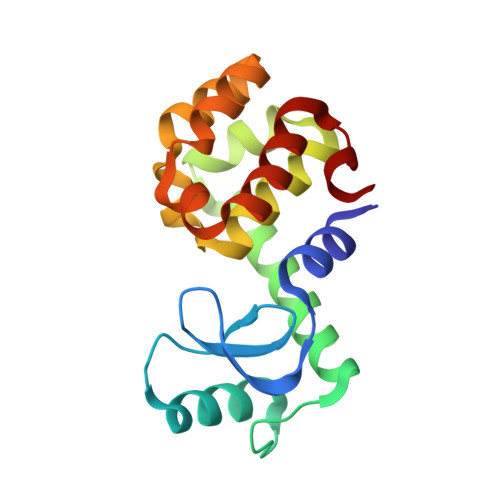Predicting absolute ligand binding free energies to a simple model site.
Mobley, D.L., Graves, A.P., Chodera, J.D., McReynolds, A.C., Shoichet, B.K., Dill, K.A.(2007) J Mol Biol 371: 1118-1134
- PubMed: 17599350
- DOI: https://doi.org/10.1016/j.jmb.2007.06.002
- Primary Citation of Related Structures:
2OTY, 2OTZ, 2OU0 - PubMed Abstract:
A central challenge in structure-based ligand design is the accurate prediction of binding free energies. Here we apply alchemical free energy calculations in explicit solvent to predict ligand binding in a model cavity in T4 lysozyme. Even in this simple site, there are challenges. We made systematic improvements, beginning with single poses from docking, then including multiple poses, additional protein conformational changes, and using an improved charge model. Computed absolute binding free energies had an RMS error of 1.9 kcal/mol relative to previously determined experimental values. In blind prospective tests, the methods correctly discriminated between several true ligands and decoys in a set of putative binders identified by docking. In these prospective tests, the RMS error in predicted binding free energies relative to those subsequently determined experimentally was only 0.6 kcal/mol. X-ray crystal structures of the new ligands bound in the cavity corresponded closely to predictions from the free energy calculations, but sometimes differed from those predicted by docking. Finally, we examined the impact of holding the protein rigid, as in docking, with a view to learning how approximations made in docking affect accuracy and how they may be improved.
Organizational Affiliation:
Department of Pharmaceutical Chemistry, University of California at San Francisco, San Francisco, CA 94143-2518, USA.
















